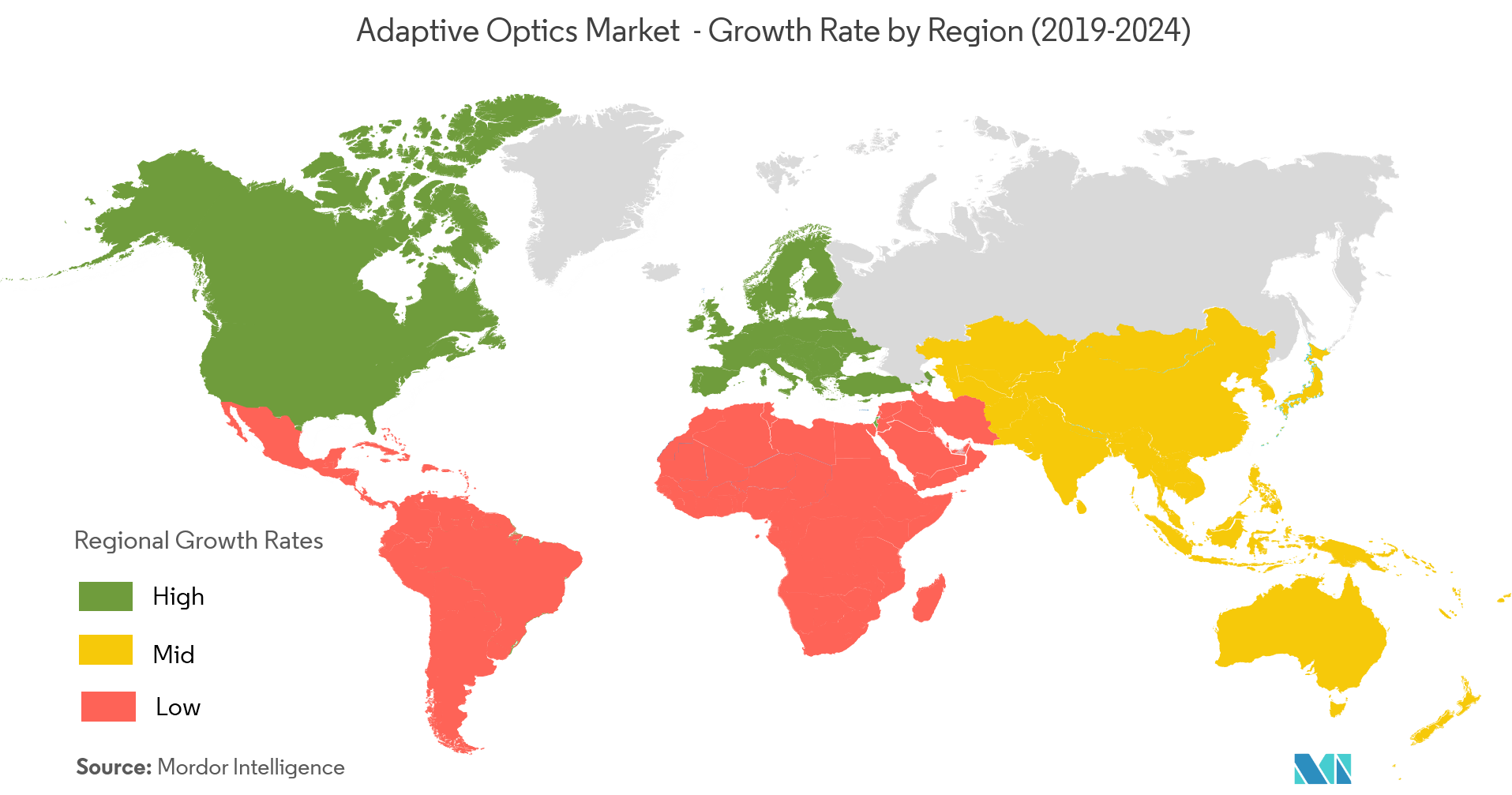Market Trends of Adaptive Optics Industry
Application in the Field of Astronomy is Expected to Grow Significantly
- Over the last twenty years, several exoplanets have been found, and their study has become a high priority in the scientific field. Direct imaging of nearby these exoplanets and the surrounding in which they form and evolve is challenging due to the smaller angular separation relative to the central star and high contrast ratio. To tackle these challenges, ground-based telescopes are needed to be equipped with adaptive optics systems optimized to get high-contrast images.
- In January 2020, National Science Foundation (NSF) newest Inouye Solar 4-meter Telescope produces the first image that uses adaptive optics to compensate for blurring created by Earth's atmosphere.
- Europe commenced the European Extremely Large Telescope (ELT) project to build the largest telescope for the study of the universe. The project is expected to complete by the year 2024 and will make extensive use of adaptive optics systems to gather 13 times lighter images possible today.
- In February 2020, ESO has given a contract to CILAS, in adaptive optics to built deformable mirrors for several instruments on ESO telescopes. CILAS will support research and technological development in Europe and ensure the availability of necessary technology for ESO telescopes.
- Furthermore, in February 2020, researchers from First Light Imaging (Meyreuil, France), Aix Marseille University (Marseille, France), and the University Grenoble Alpes (Grenoble, France) have created a SWIR camera for AO that has low noise for free-space optical communications that runs at 600 frames per second (fps) and has low size, weight, and power (SWaP) as well as low cost.
- With such more projects to come in the recent future the demand for adaptive optics sytems is expected to grow significantly in the astronomy industry.

North America Region to Witness a fastest Growth
- Adaptive optics were historically developed for and are still being used extensively in defense applications across the world. The United States, with its high defense budgets and well-developed industrial defense complex, continue to use technologies like adaptive optics for developing high energy laser systems along with other applications. American defense spending is expected to continue to remain very high, and it is expected to drive the development of modern defense technology using adaptive optics.
- In addition to the Defense applications, the astronomical community has been an early adopter of this technology once it was declassified. The 200-inch Hale Telescope in California uses a laser in its adaptive optics system to correct the effects of atmospheric turbulence and enhance the capabilities of the telescope.
- There continues to be extensive research on the applications of adaptive optics in the field of healthcare across the universities and research laboratories of the North American region. The Institute of Optics, University of Rochester (USA), started by studying the potential for application of adaptive optics in ophthalmology and to correct most of the eye's aberrations to image the living human eye at high resolution and the trend has caught up with a number of universities investing resources to study applications of adaptive optics.



